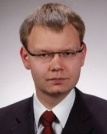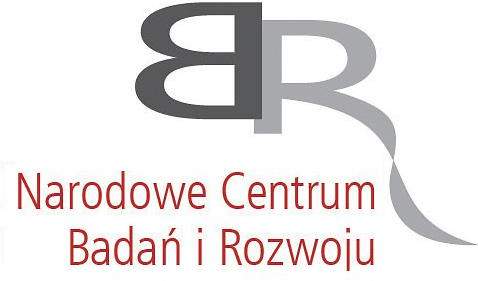| 1. |
Varga A.♦, Ehrenreiter K.♦, Aschenbrenner B.♦, Kocieniewski P., Kochańczyk M., Lipniacki T., Baccarini M.♦, RAF1/BRAF dimerization integrates the signal from RAS to ERK and ROKα,
Science Signaling, ISSN: 1945-0877, DOI: 10.1126/scisignal.aai8482, Vol.10, No.469, pp.eaai8482-1-11, 2017 Streszczenie:
Downstream of growth factor receptors and of the guanine triphosphatase (GTPase) RAS, heterodimers of the serine/threonine kinases BRAF and RAF1 are critical upstream kinases and activators of the mitogen-activated protein kinase (MAPK) module containing the mitogen-activated and extracellular signal–regulated kinase kinase (MEK) and their targets, the extracellular signal–regulated kinase (ERK) family. Either direct or scaffold protein–mediated interactions among the components of the ERK module (the MAPKKKs BRAF and RAF1, MEK, and ERK) facilitate signal transmission. RAF1 also has essential functions in the control of tumorigenesis and migration that are mediated through its interaction with the kinase ROKα, an effector of the GTPase RHO and regulator of cytoskeletal rearrangements. We combined mutational and kinetic analysis with mathematical modeling to show that the interaction of RAF1 with ROKα is coordinated with the role of RAF1 in the ERK pathway. We found that the phosphorylated form of RAF1 that interacted with and inhibited ROKα was generated during the interaction of RAF1 with the ERK module. This mechanism adds plasticity to the ERK pathway, enabling signal diversification at the level of both ERK and RAF. Furthermore, by connecting ERK activation with the regulation of ROKα and cytoskeletal rearrangements by RAF1, this mechanism has the potential to precisely coordinate the proper timing of proliferation with changes in cell shape, adhesion, or motility. Słowa kluczowe:
MAPK pathway, kinase RAF, protein isoform, phosphorylation, mathematical modeling Afiliacje autorów:
| Varga A. | - | University of Vienna (AT) | | Ehrenreiter K. | - | University of Vienna (AT) | | Aschenbrenner B. | - | University of Vienna (AT) | | Kocieniewski P. | - | IPPT PAN | | Kochańczyk M. | - | IPPT PAN | | Lipniacki T. | - | IPPT PAN | | Baccarini M. | - | University of Vienna (AT) |
|  | 40p. |
| 2. |
Kochańczyk M., Kocieniewski P., Kozłowska E.♦, Jaruszewicz-Błońska J., Sparta B.♦, Pargett M.♦, Albeck J.G.♦, Hlavacek W.S.♦, Lipniacki T., Relaxation oscillations and hierarchy of feedbacks in MAPK signaling,
Scientific Reports, ISSN: 2045-2322, DOI: 10.1038/srep38244, Vol.7, pp.38244-1-15, 2017 Streszczenie:
We formulated a computational model for a MAPK signaling cascade downstream of the EGF receptor to investigate how interlinked positive and negative feedback loops process EGF signals into ERK pulses of constant amplitude but dose-dependent duration and frequency. A positive feedback loop involving RAS and SOS, which leads to bistability and allows for switch-like responses to inputs, is nested within a negative feedback loop that encompasses RAS and RAF, MEK, and ERK that inhibits SOS via phosphorylation. This negative feedback, operating on a longer time scale, changes switch-like behavior into oscillations having a period of 1 hour or longer. Two auxiliary negative feedback loops, from ERK to MEK and RAF, placed downstream of the positive feedback, shape the temporal ERK activity profile but are dispensable for oscillations. Thus, the positive feedback introduces a hierarchy among negative feedback loops, such that the effect of a negative feedback depends on its position with respect to the positive feedback loop. Furthermore, a combination of the fast positive feedback involving slow-diffusing membrane components with slower negative feedbacks involving faster diffusing cytoplasmic components leads to local excitation/global inhibition dynamics, which allows the MAPK cascade to transmit paracrine EGF signals into spatially non-uniform ERK activity pulses. Słowa kluczowe:
MAPK signaling, oscillations, mathematical modelling Afiliacje autorów:
| Kochańczyk M. | - | IPPT PAN | | Kocieniewski P. | - | IPPT PAN | | Kozłowska E. | - | Silesian University of Technology (PL) | | Jaruszewicz-Błońska J. | - | IPPT PAN | | Sparta B. | - | University of California (US) | | Pargett M. | - | University of California (US) | | Albeck J.G. | - | University of California (US) | | Hlavacek W.S. | - | Los Alamos National Laboratory (US) | | Lipniacki T. | - | IPPT PAN |
|  | 40p. |
| 3. |
Kocieniewski P., Lipniacki T., MEK1 and MEK2 differentially control the duration and amplitude of the ERK cascade response,
PHYSICAL BIOLOGY, ISSN: 1478-3967, DOI: 10.1088/1478-3975/10/3/035006, Vol.10, pp.035006-1-15, 2013 Streszczenie:
The Raf/MEK/ERK cascade is one of the most studied and important signal transduction pathways. However, existing models largely ignore the existence of isoforms of the constituent kinases and their interactions. Here, we propose a model of the ERK cascade that includes heretofore neglected differences between isoforms of MEK. In particular, MEK1 is subject to a negative feedback from activated ERK, which is further conferred to MEK2 via hetero-dimerization. Specifically, ERK phosphorylates MEK1 at the residue Thr292, hypothetically creating an additional phosphatase binding site, accelerating MEK1 and MEK2 dephosphorylation. We incorporated these recently discovered interactions into a mathematical model of the ERK cascade that reproduces the experimental results of Catalanotti et al (2009 Nature Struct. Mol. Biol. 16 294–303) and Kamioka et al (2010 J. Biol. Chem. 285 33540–8). Furthermore, the model allows for predictions regarding the differences in the catalytic activity and function of the MEK isoforms. We propose that the MEK1/MEK2 ratio regulates the duration of the response, which increases with the level of MEK2 and decreases with the level of MEK1. In turn, the amplitude of the response is controlled by the total amount of the two isoforms. We confirm the proposed model structure performing a random parameter sampling, which led us to the conclusion that the sampled parameters, selected to properly reproduce wild-type (WT) cell behavior, to allow for qualitative reproduction of differences in behavior WT cells and cell mutants studied experimentally. Afiliacje autorów:
| Kocieniewski P. | - | IPPT PAN | | Lipniacki T. | - | IPPT PAN |
|  | 25p. |
| 4. |
Kocieniewski P., Faeder J.R.♦, Lipniacki T., The interplay of double phosphorylation and scaffolding in MAPK pathways,
JOURNAL OF THEORETICAL BIOLOGY, ISSN: 0022-5193, DOI: 10.1016/j.jtbi.2011.11.014, Vol.295, pp.116-124, 2012 Streszczenie:
The MAPK cascades are principal kinase transduction pathways in eukaryotic cells. This family includes RAF/ERK, JNK, and p38 pathways. In the MAPK cascade, the signal is transmitted through three layers of sequentially activated kinases, MAP3K, MAP2K, and MAPK. The latter two kinases require dual phosphorylation for activation. The dual phosphorylation requirement has been implicated in bringing about bistability and switch-like responses in the cascade. MAPK signaling has been known to involve scaffolds—multidomain proteins that can assemble protein complexes; in this case the three MAPK components. Scaffolds are thought to increase the specificity of signaling by pairing enzymes and substrates. Scaffolds have been shown to biphasically control the response (the level of activated MAPK) and amplify it at a certain scaffold concentration range. In order to understand the interplay of scaffolding and multisite phosphorylation, in this study we analyze simplified MAPK signaling models in which we assume that either mono- or double phosphorylation of MAP2K and MAPK is required for activation. We demonstrate that the requirement for double phosphorylation directs signaling through scaffolds. In the hypothetical scenario in which mono-phosphorylation suffices for kinase activity, the presence of scaffolds has little effect on the response. This suggests that double phosphorylation in MAPK pathways, although not as efficient as mono-phosphorylation, evolved together with scaffolds to assure the tighter control and higher specificity in signaling, by enabling scaffolds to function as response amplifiers. Słowa kluczowe:
Kinase cascades, Rule based modeling, Molecular pathways evolution Afiliacje autorów:
| Kocieniewski P. | - | IPPT PAN | | Faeder J.R. | - | University of Pittsburgh School of Medicine (US) | | Lipniacki T. | - | IPPT PAN |
|  | 35p. |


























